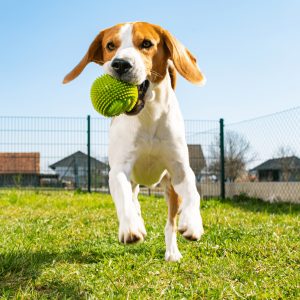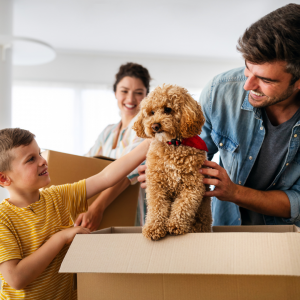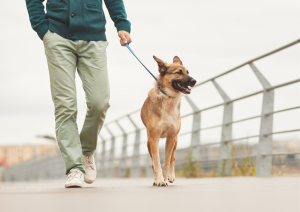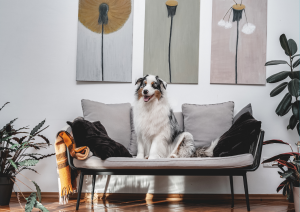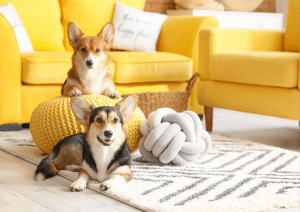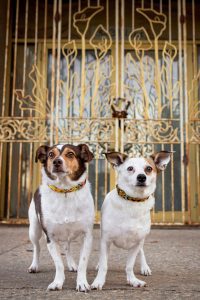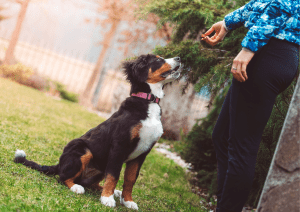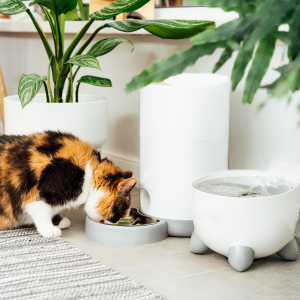
As a pet owner, finding a home that accommodates your lifestyle and your pet’s needs can be challenging. Identifying the right pet friendly home features is crucial to ensuring comfort and safety for both you and your furry friend. This article will help you navigate the key features to look for when purchasing a home in Edmonton.
The essential pet friendly home features include durable, non-slip flooring; a spacious, secure yard; built-in pet amenities like washing stations; proximity to parks; and adequate indoor space for pet activities. These features ensure a pet-friendly environment in any Edmonton home.
These are just the basics to consider, but there’s much more to explore. Keep reading to discover additional insights that will guide you in finding the perfect home for both you and your pets in Edmonton.
Why Your Pet Deserves the Perfect Home in Edmonton
Choosing the right home is one of the most significant decisions you’ll make, and it becomes even more important when you have pets to consider. Your furry companions are part of your family, and their needs should be a priority when searching for a new home. The unique climate and urban landscape of Edmonton requires specific pet friendly home features that ensure your pets are safe, comfortable, and happy. From harsh winters to long summer days, having a home that caters to your pet’s well-being can make all the difference in your daily life.
Pet Friendly Home Features You Can’t Ignore
When considering a move to Edmonton, it’s essential to focus on key pet friendly home features that will make your life—and your pet’s life—much easier. Not all homes are created equal when it comes to accommodating pets, so identifying these features early in your search is vital.
The Importance of Durable, Non-Slip Flooring for Pet Safety
One of the most critical pet friendly home features to consider is the type of flooring. Pets, especially dogs, can be tough on floors. Their claws can scratch wood, and their movements can make surfaces slippery. Opting for durable, non-slip flooring like vinyl, tile, or laminate is a practical choice. These materials are not only resistant to scratches but also easy to clean, ensuring your home remains in top condition despite the wear and tear from your pets. Additionally, non-slip surfaces reduce the risk of your pet slipping and injuring themselves, particularly as they age.
Creating a Safe and Spacious Yard for Your Pets
A spacious, secure yard is another must-have for pet owners in Edmonton. Whether you have a dog that needs room to run or a cat that enjoys exploring a well-fenced yard provides a safe space for your pets to enjoy the outdoors. Consider a yard with high, secure fencing to prevent escapes and ensure your pet’s safety. The yard should also have shaded areas to protect pets from the sun during the summer months and a dry, elevated spot to keep them out of the snow during the winter. A pet friendly yard allows your pet to enjoy fresh air and exercise, contributing to their overall health and happiness.
Built-In Pet Amenities: More Than Just a Luxury
While pet-friendly home features like durable flooring and secure yards are essential, built-in pet amenities can significantly enhance your day-to-day convenience. Consider homes with built-in pet washing stations, which can be a lifesaver, especially during Edmonton’s muddy spring or snowy winter months. These stations make it easy to clean your pets after outdoor adventures, keeping your home cleaner and reducing the time and effort required for grooming. Additionally, look for homes with pet-specific storage solutions, such as cabinets for food and supplies, or built-in feeding areas, which help keep your living spaces organized and free of clutter.
Proximity to Parks and Trails: A Must for Active Pets
Living near parks and trails is a significant advantage for pet owners in Edmonton. The city boasts numerous dog-friendly parks and walking trails, offering ample opportunities for exercise and socialization. When searching for a home, consider its proximity to these outdoor spaces. Not only will this provide your pet with a place to run and play, but it will also encourage a healthier lifestyle for both of you. Regular trips to the park can reduce your pet’s anxiety, help manage their weight, and improve their overall well-being. Plus, having a nearby park makes it easier to incorporate daily walks into your routine, which is especially important during Edmonton’s long winter months.
Some pet friendly neighborhoods to consider include Glenora, near MacKinnon Ravine Park; Rutherford, close to Blackmud Creek Ravine; Riverbend, offering access to Terwillegar Park; and Strathcona, with its easy access to the River Valley. These areas provide convenient access to parks and trails, enhancing the quality of life for both you and your pets.
Designing Indoor Spaces for Pet Activities and Comfort
Indoor space is just as important as outdoor space when considering pet friendly home features. Pets need areas where they can play, rest, and feel secure. Look for homes with open floor plans that allow for easy movement and interaction. Designate specific areas for your pets, such as a cozy corner for a dog bed or a window perch for your cat. This not only gives them a sense of ownership but also helps keep the rest of your home organized. Additionally, homes with ample natural light and good ventilation can create a more pleasant environment for your pets, reducing stress and promoting relaxation.
Making the Right Choice: Finding a Pet-Friendly Home in Edmonton
Finding a home with the right pet friendly home features in Edmonton requires careful consideration of both your needs and those of your pet. Start by making a list of must-haves, such as durable flooring, a secure yard, and proximity to parks. Then, consider any additional amenities that could enhance your pet’s quality of life, like built-in washing stations or indoor play areas. Working with a knowledgeable real estate agent who understands the importance of these features can help streamline your search and ensure you find the perfect home for you and your pet.
FAQ: How can I make my home more comfortable for a senior pet?
Making your home comfortable for a senior pet involves focusing on accessibility, safety, and comfort. Start by adding ramps or pet stairs to help your pet navigate areas like beds or couches more easily. Consider using non-slip rugs or mats to prevent slipping on hard floors, especially if your home has tile or laminate flooring. Ensure your pet’s bed is supportive and easy to access, ideally placed in a quiet, draft-free area. Providing easy access to food and water, perhaps with elevated bowls, can also make mealtimes more comfortable for an aging pet. Lastly, regular vet visits and attention to your pet’s changing needs are crucial in maintaining their quality of life as they age.
Enhancing Your Life and Your Pet’s Life Together
Choosing a home with the right pet friendly features is not just about convenience; it’s about creating a living space where both you and your pets can thrive. By focusing on durable flooring, spacious yards, built-in amenities, and proximity to outdoor spaces, you’re setting the stage for a happy, healthy life with your furry companions in Edmonton. As you begin your home search, keep these features in mind to ensure you find a place that meets all your needs.
At Dave Ozubko Real Estate Team, we know that your pets are a cherished part of your family, and finding the perfect home for everyone is our top priority. We’re here to help you discover a property that meets all your needs—indoors and out. Through our #RealtorToTheRescue program, a portion of every transaction goes toward supporting local animal shelters, ensuring pets across Edmonton find loving homes. Let us assist you in finding a space where both you and your pets can thrive, creating memories that will last a lifetime.
